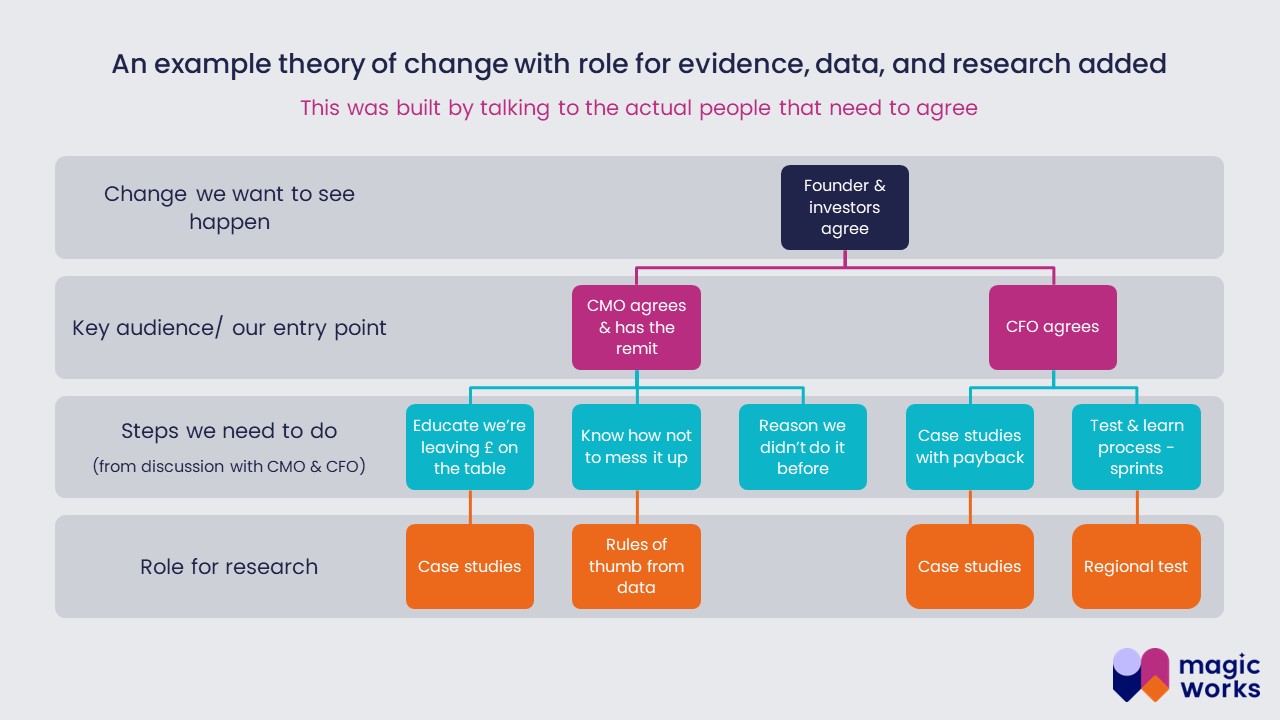This is how it goes: You’ve put in the work. You’ve read How Brands Grow cover-to-cover. You’ve sifted through the post-Cannes articles and podcasts. You’re on top of the latest conversations in marketing. You know the theory.
But when it comes round to planning every September, when you offer up the moves that the wisest minds suggest, no-one’s listening. You talk through your big ideas. Put forward plans that you know will benefit the business both now and in the long-term but……nothing.
The problem is that, to senior leaders, marketing theory seems so abstract, so disconnected from their business, so one-size-fits all. And it’s contradictory in places. The theories don’t come together into a coherent context-specific whole.
It’s such a waste of talent, of ideas and of opportunities for growth. Especially as the fix is available. Because there’s more data than ever at marketer’s fingertips and there’s training on how to put the right numbers alongside the theory and sell best practice in.
Can you hear me? Am I on?
In interviews with marketers this year, we asked what blocks them from being effective.
The thing we heard most was that senior people, who could spend the money, just don’t respond to presentations of marketing theory. Some people said the boss thinks marketing just wants to spend money for the sake of it. Others that all this theory is subjective. Just someone’s opinion.
But it’s frustrating, infuriating, and for one marketer, even depressing:
“Sometimes I feel like I am just talking into a vacuum. And can you hear me? Am I on? Why are you not registering?”
And it’s such a waste too. If the theories could be applied and used properly, we’d be able to do better marketing plans. We’d sell more stuff, and at higher prices.
So, what’s the solution?
Data and measurement obviously have a role to play. Econometrics is the gold standard but there are also cheaper and easier options available. Analysing search terms give a picture of underlying sector demand. And simply tracking the right metrics works to show if initiatives are on track.
But more important than the actual numbers used is the match between evidence being presented and person hearing that evidence. It has to be data and numbers that can actually convince the specific people concerned.
And different people need different evidence. The slide below is an example of the steps needed to get a change signed off, in a real-life business trying to get brand building off the ground.



